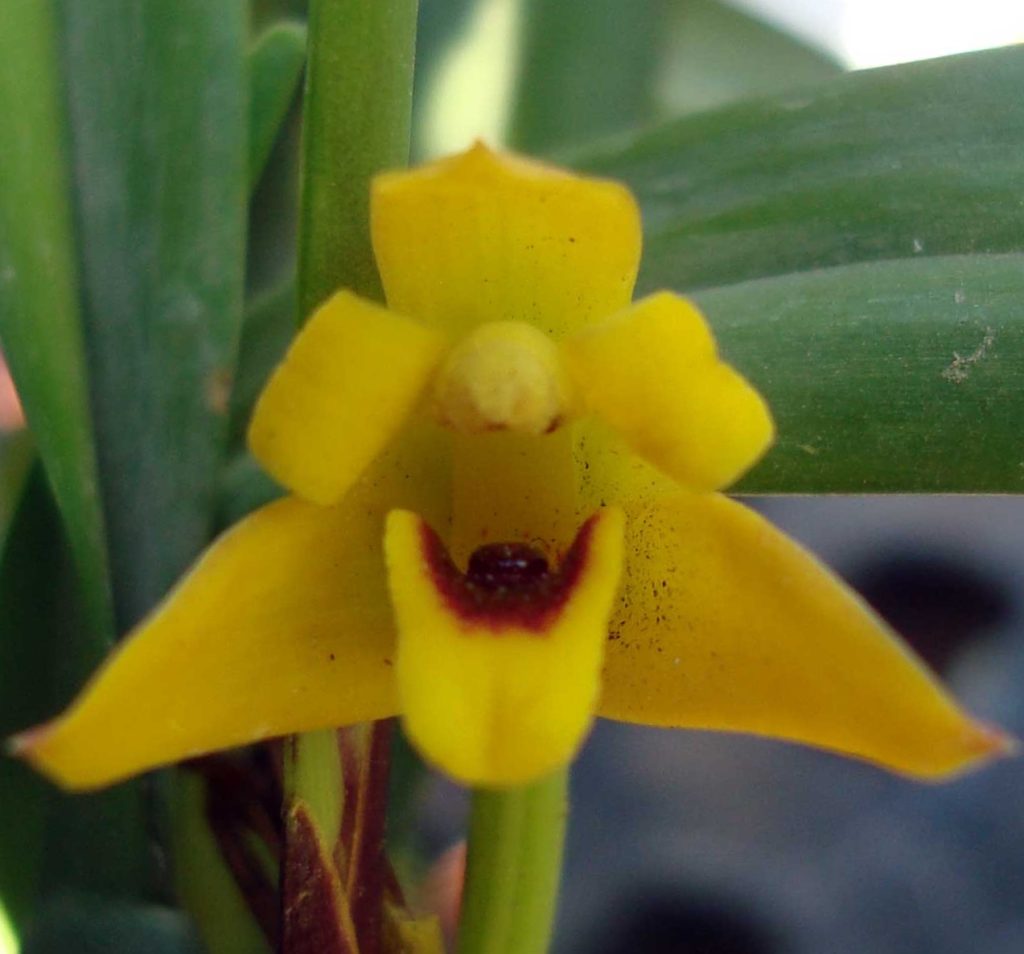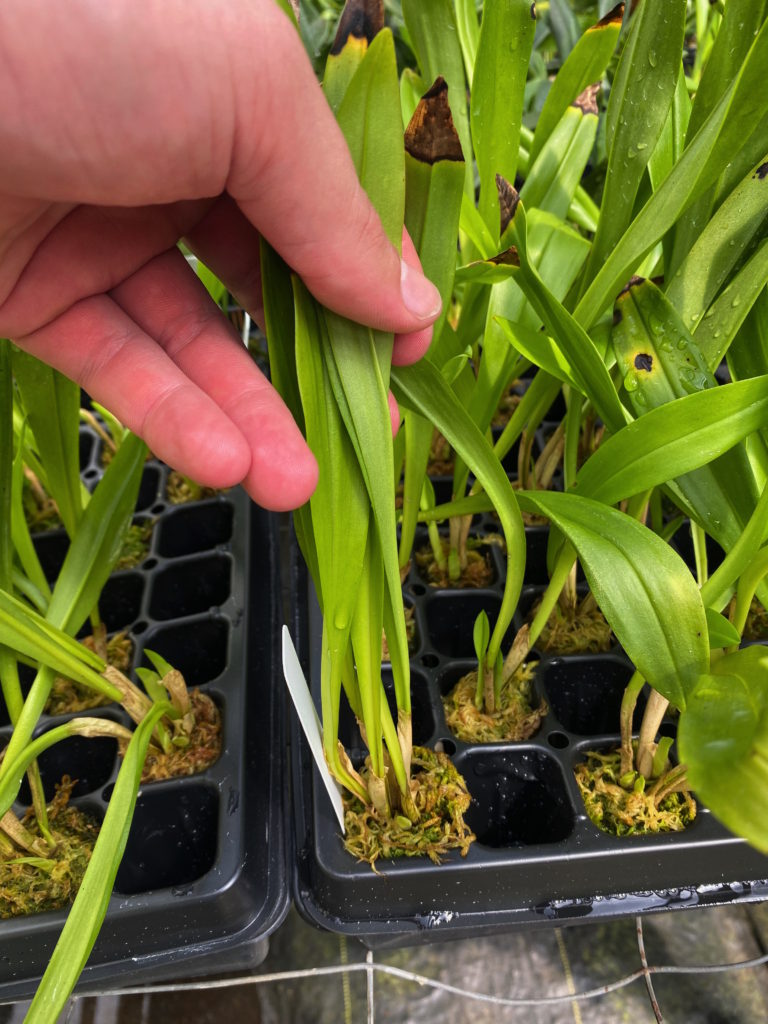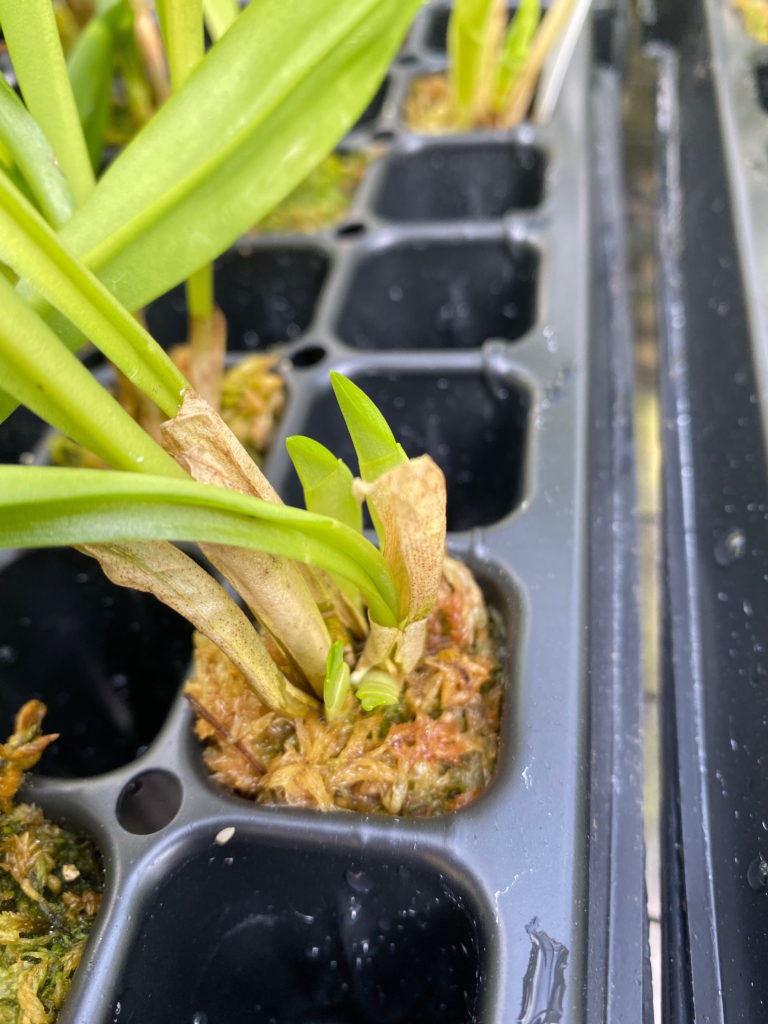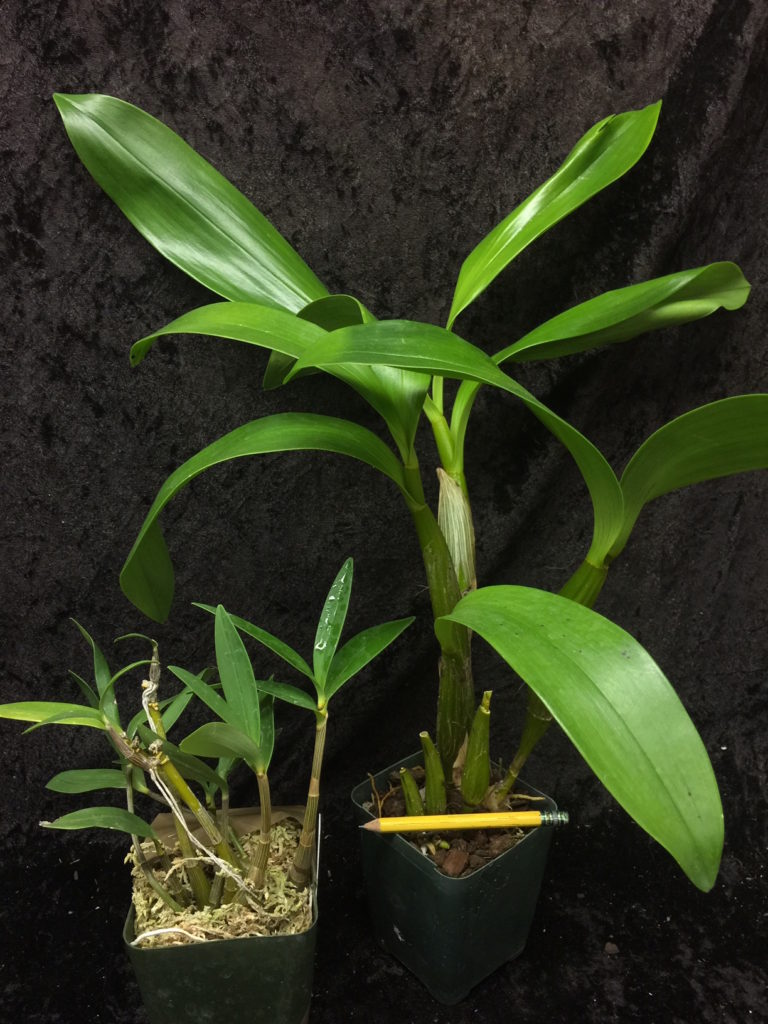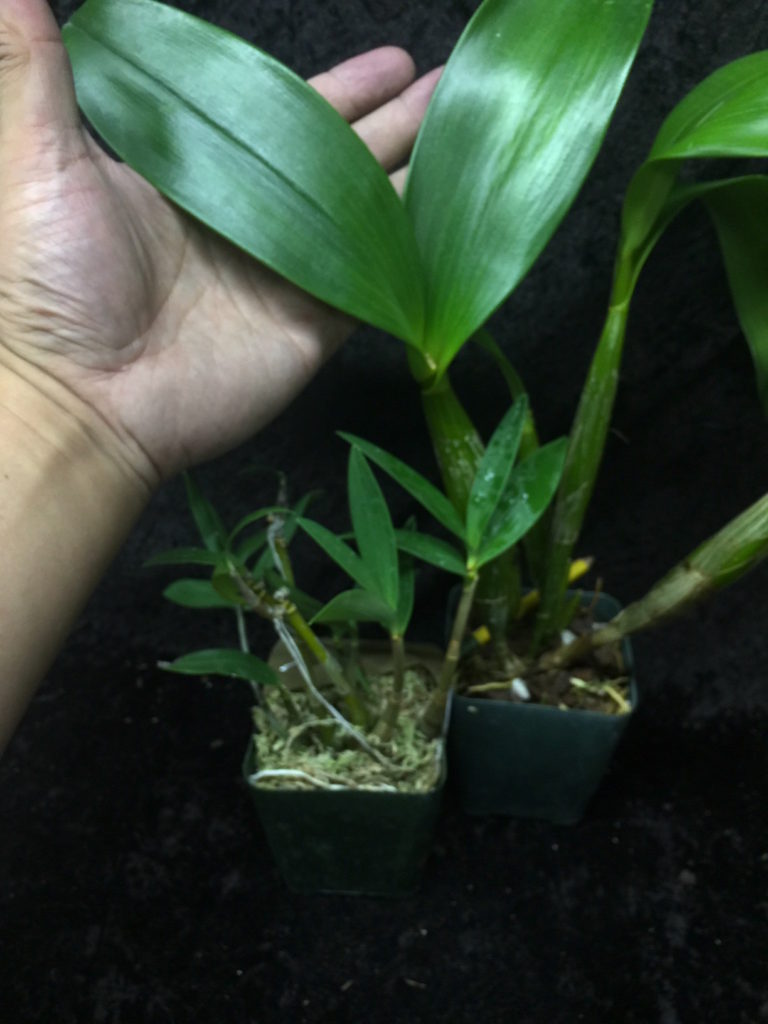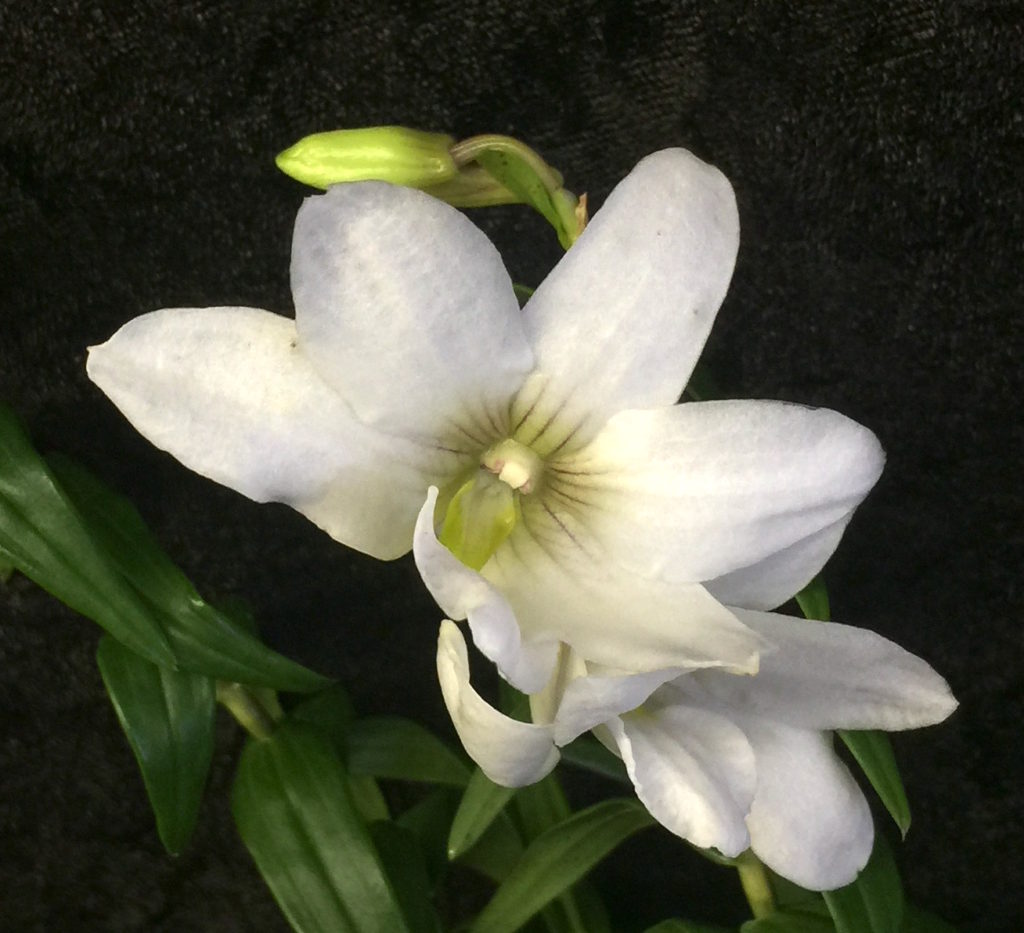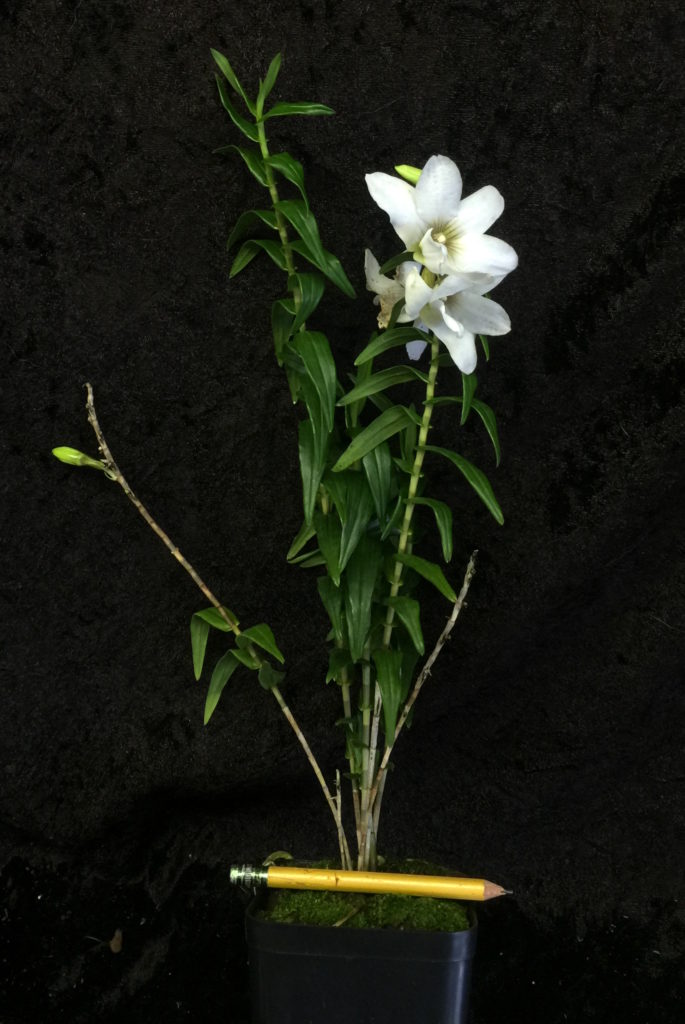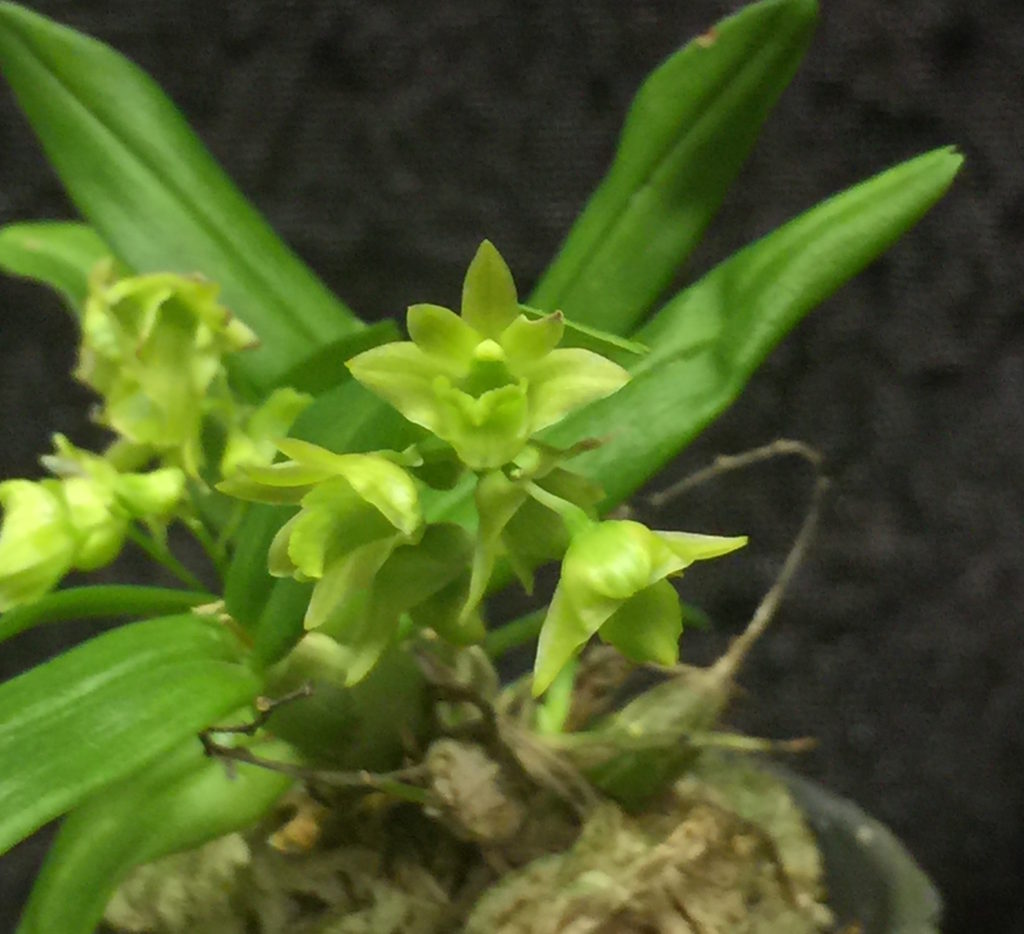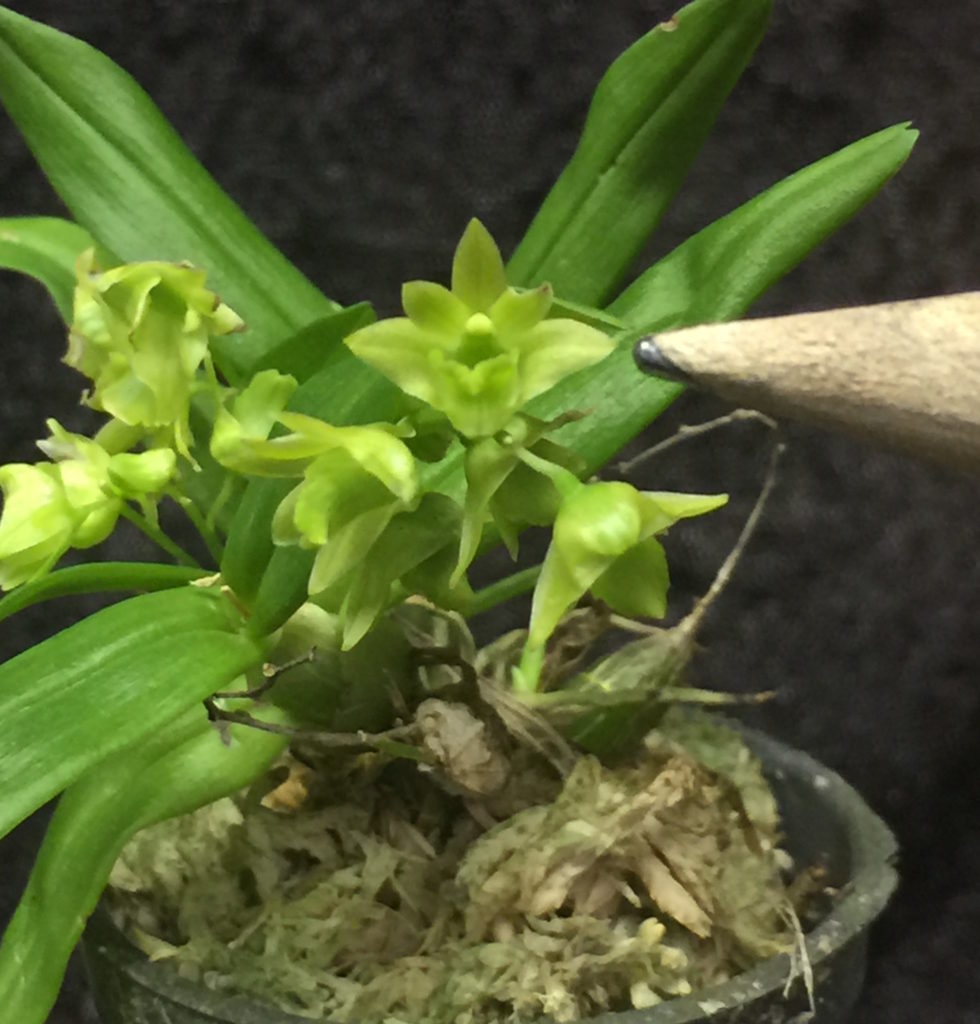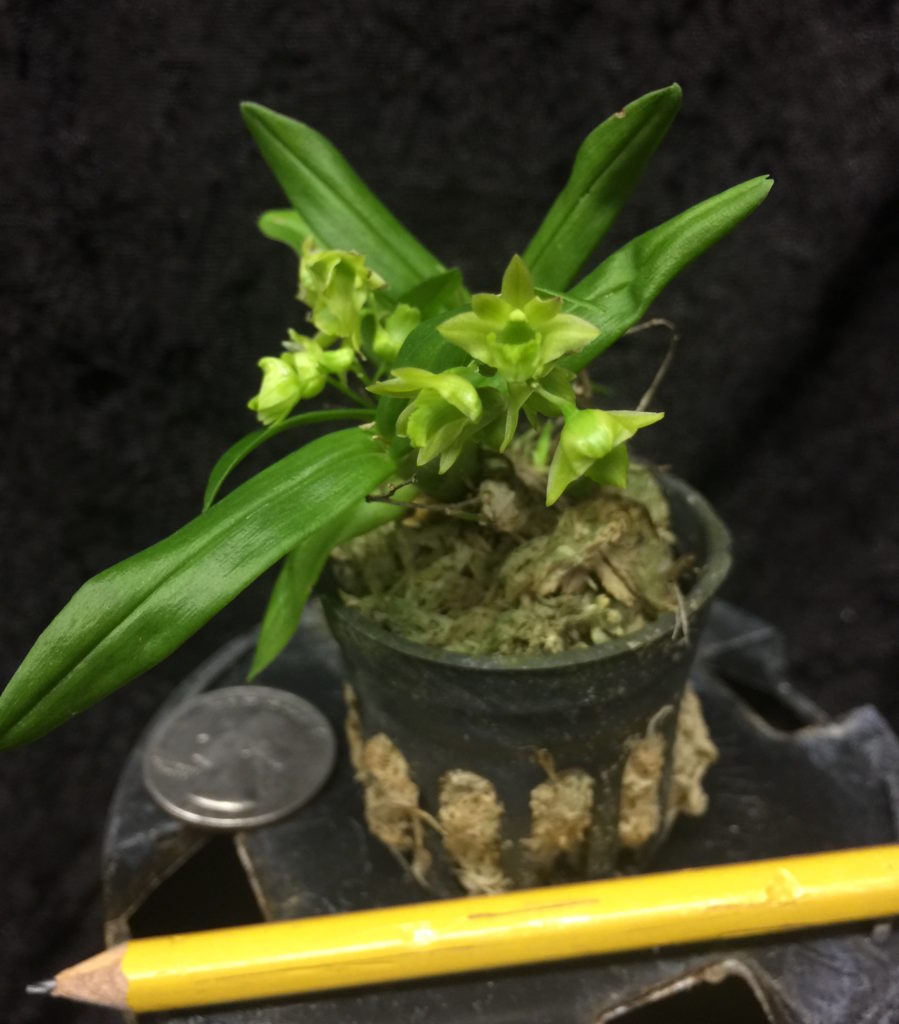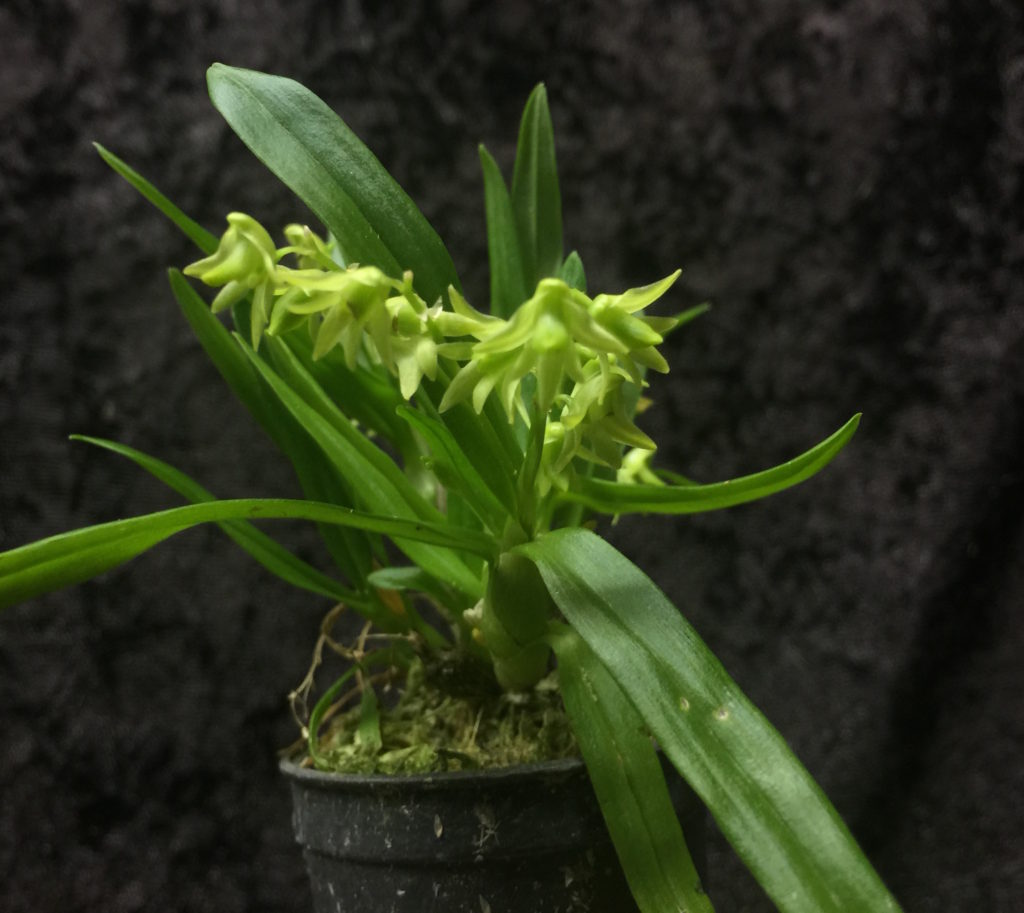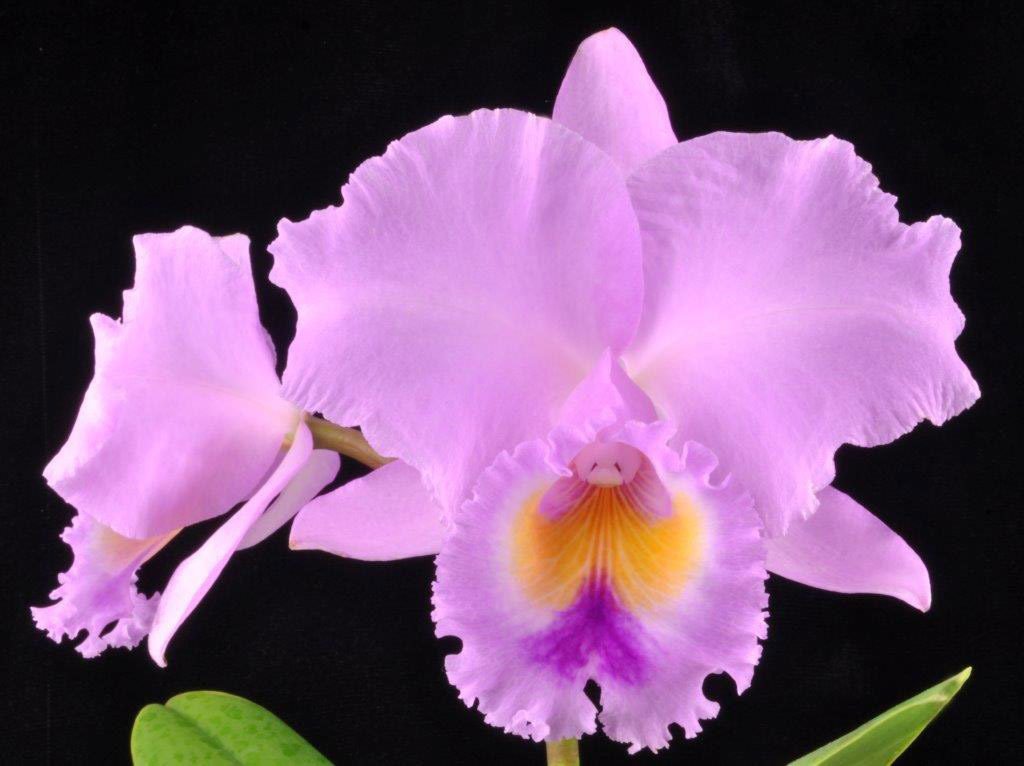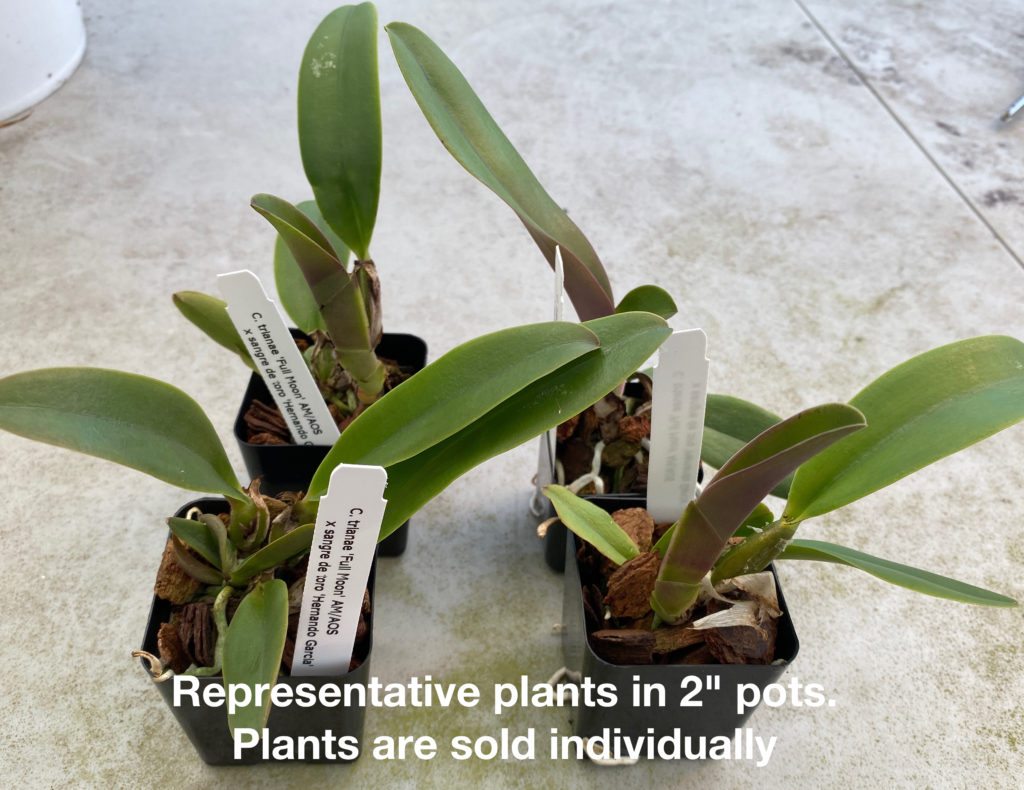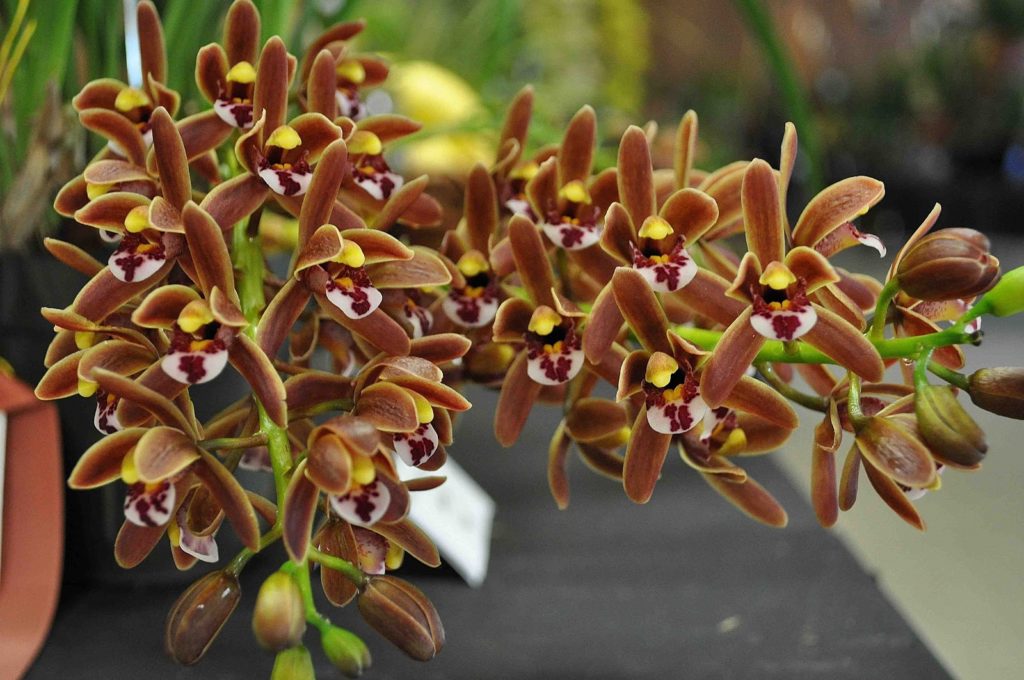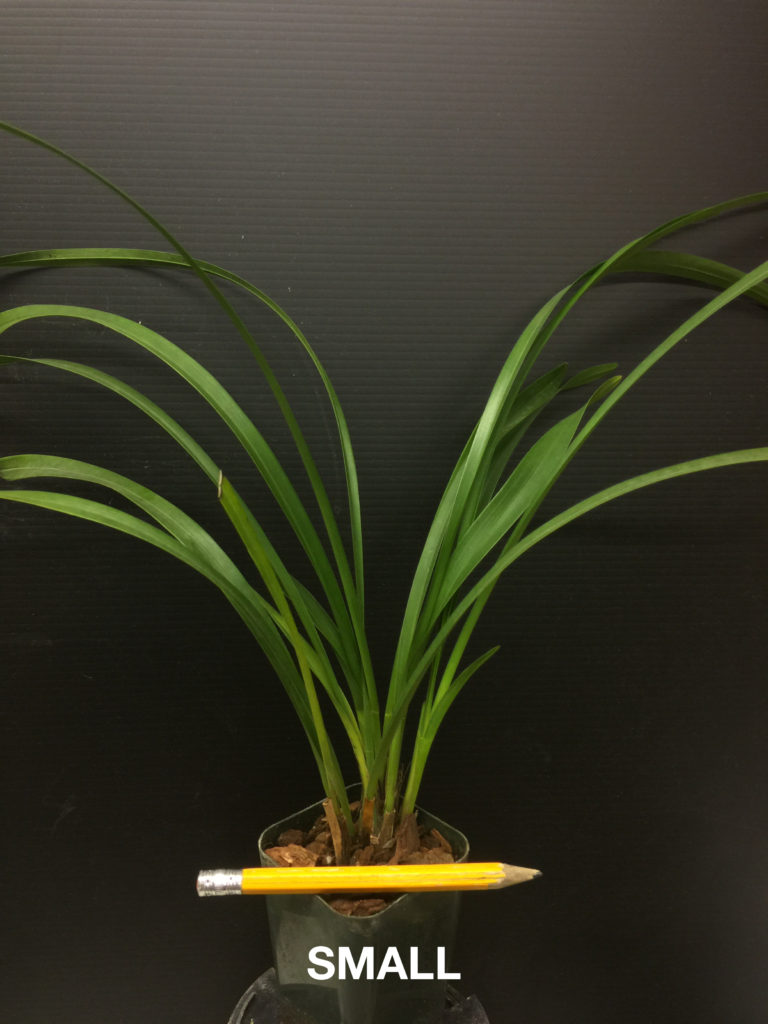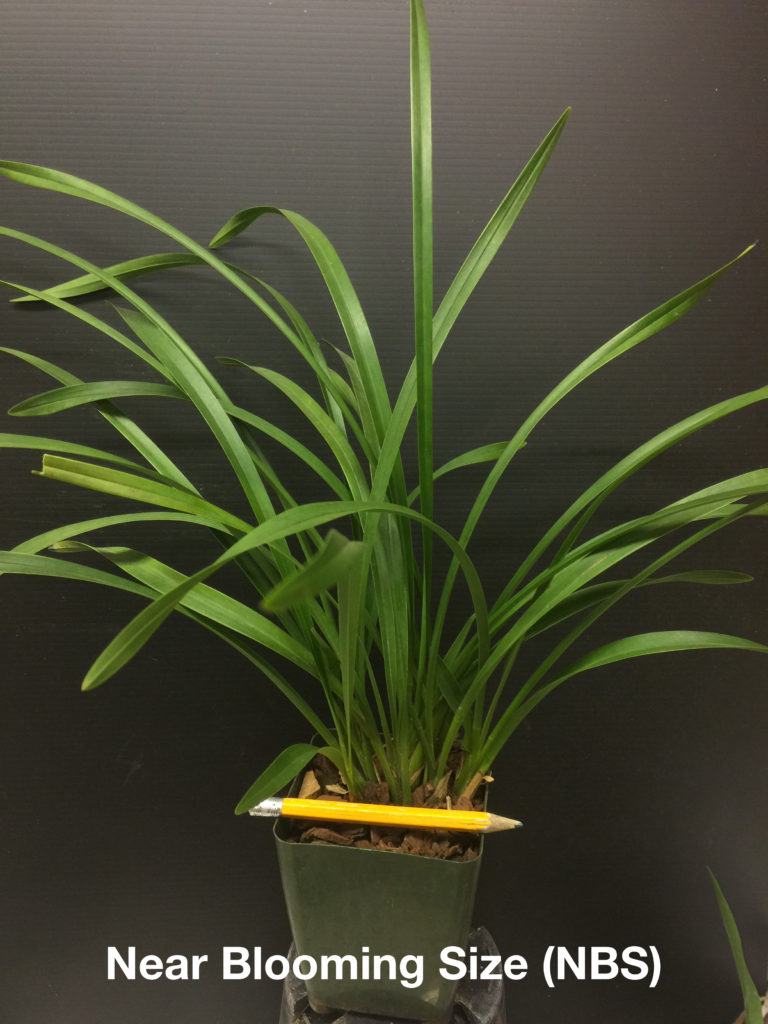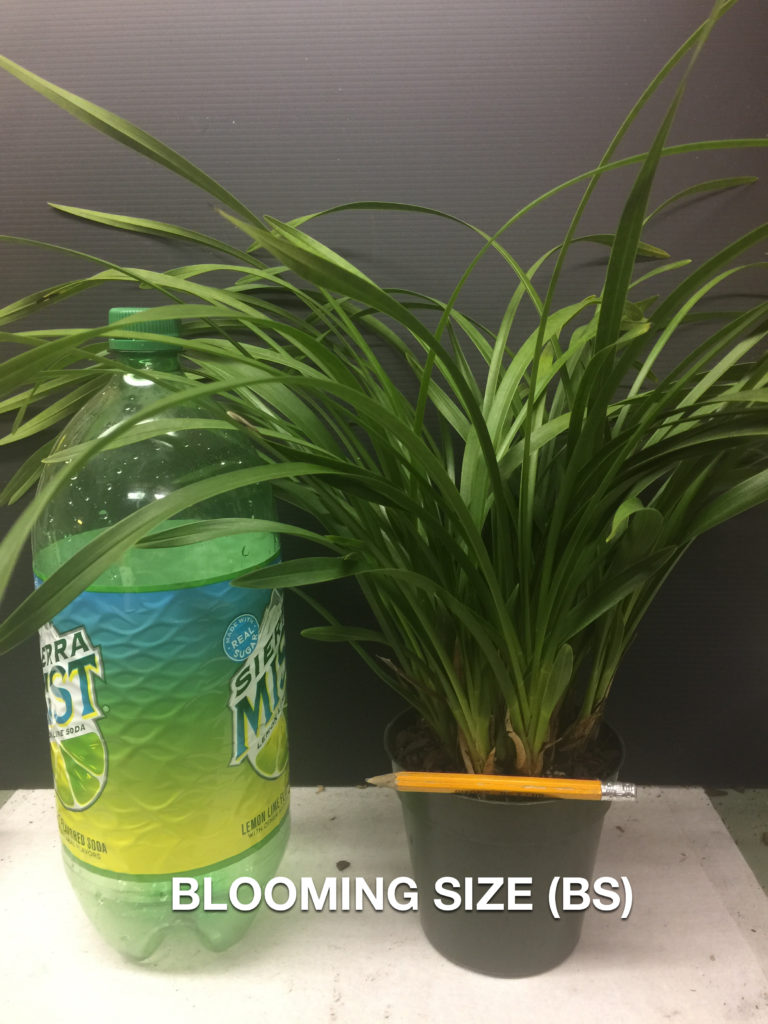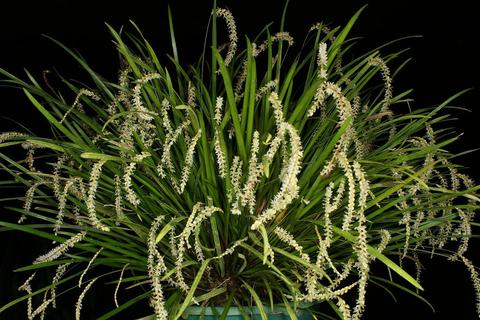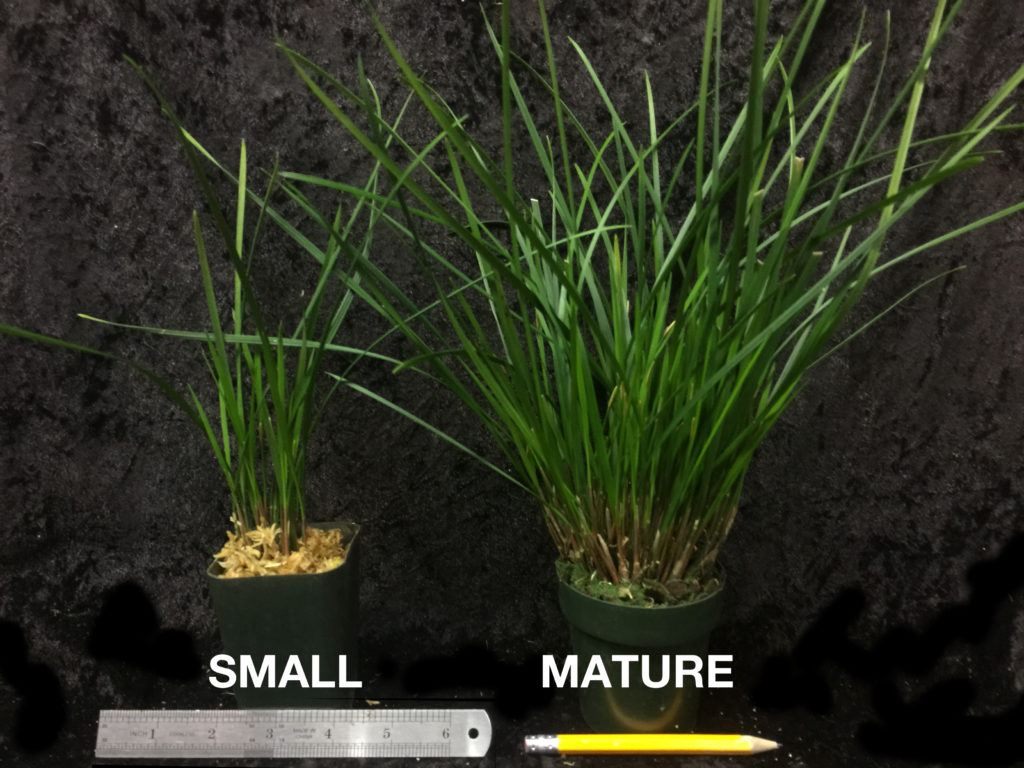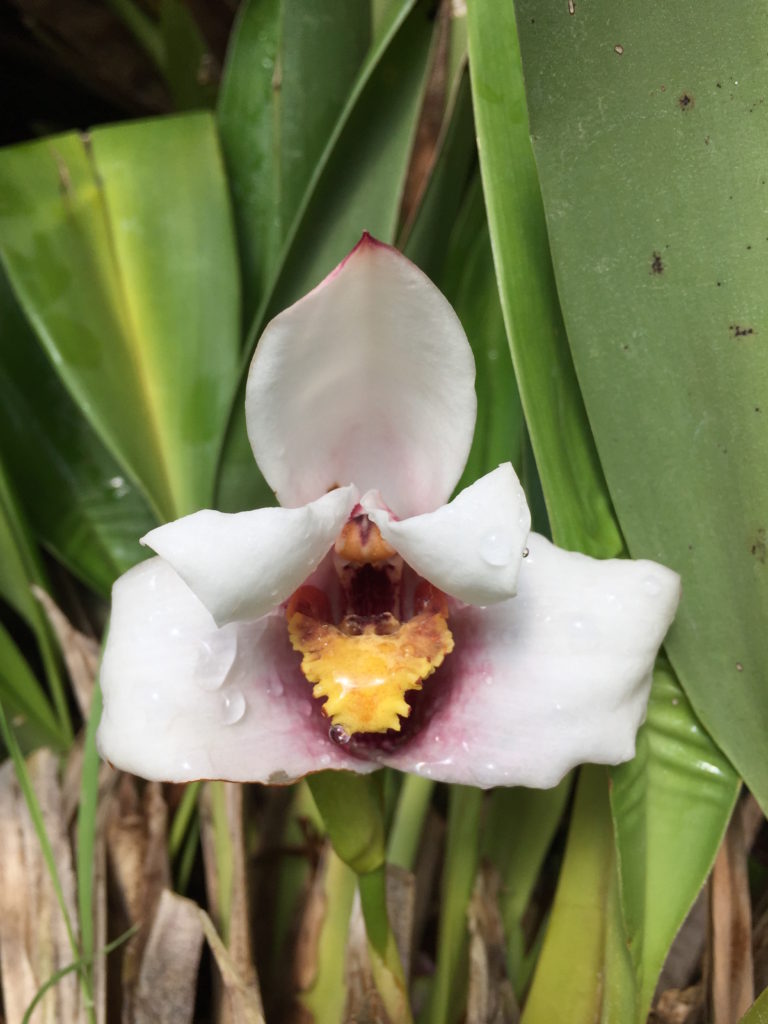To place an order, email us at orchidinsanity@gmail.com with the name and quantity of the plants you’d like to get, and we’ll send you an invoice that you can pay with any credit card or PayPal. Some plants are very limited in availability, so it’s first-come (i.e, first paid), first-served. If something is sold out but you’d still like to get it, there’s a reasonable chance we’ll have more in the future, so let us know if you’re still interested.
ABBREVIATIONS
SM = SMALL; NBS = Near Blooming Size (usually 12 – 18 months from reaching Blooming Size); BS = Blooming Size.
SHIPPING INFO
Shipping via USPS First Class is $5 for the first plant, and $2 for each subsequent plant. Upgrade to USPS Priority is an additional $4 (may be more for larger/heavier orders). Heat packs are free (if needed) on orders over $40.
PLEASE NOTE: plants are not in bud/bloom unless otherwise described.
1) Phragmipedium Eric Young
A classic Phragmipedium hybrid, made by crossing longifolium x besseae. Great story about the besseae parent: a division sold for US$50,000. Yep, you read that right. Fiddy grand. 50 Gs. Was it really worth it? I guess that depends on your point of view, and the size of your bank account. But that makes these Phrag. Eric Young plants we’re offering worth $25K, right? No, but it does make them very likely to be award quality. And you can have one for the astonishingly low price of $65. Single growth plants, NBS/BS. QUANTITY ~2.
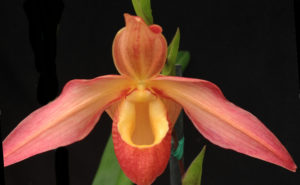
2) Phrag. Jason Fischer (besseae x Mem. Dick Clements)
In my opinion, still the best Phragmipedium hybrid ever. The hybrid has been made many times over, and deservedly so, as the quality of the parents used improves from better breeding. The besseae parent of this cross received an FCC.
Price: Single growth BS $65. SOLD OUT (We’ll likely have more of these in the future, so email us if you’re interested.)
3) Phrag. Ruby Slippers (besseae x caudatum)
One of the parents of Ruby Slippers, Phrag. caudatum, is one of the slipper orchids with super long petals, but has a kind of dull (in my opinion) green color. Good thing the other parent, besseae, imparts its intense red to its progeny! A good breeding idea would be to sib cross these, as some of them would likely come out with even longer — but still red — petals. LIMITED AVAILABILITY.
Price: Single-growth BS, $55.
4) Phrag. St. Ouen
This hybrid is derived purely from (Hanne Popow = schlimii x besseae) crossed back to besseae. One of the great things about Phrag. schlimii is that it’s the sole fragrant Phrag species. Good thing it passes on its fragrance to its hybrids, such as Phrag. St. Ouen. You can see a nice photo of one here.
LIMITED AVAILABILITY.
Price: Single-growth BS, $55.
5) Dracula cordobae
Dracula orchids (named for the Latin word for “dragon”, not the bloodthirsty fiend) got a huge marketing boost when a botanist (Luer) decided to carve out a separate genus from the Masdevallias. After all, the name itself creates curiosity; who wouldn’t want to try a Dracula vampira or Dracula Bela orchid? Well, growers in hot areas definitely should avoid these like vampires and sunlight, as they’ll struggle or just turn to dust. If you have cooler conditions that you can keep humid, you can do well with Draculas. We’re offering Drac. cordobae, a SEQUENTIALLY flowering (i.e., one flower blooms and drops followed by another) species whose flowers can reach a natural span of 6″. A large plant in a 4″ pot can put out 100 flowers! These plug-grown plants are ready to go into 2″ pots (and can sell for $40 or more at that size). Haven’t seen these in bloom yet, but you can see a great photo of this species here.
Price: $22.
6) Dendrobium macrophyllum
There’s probably a bigger Dendrobium species out there, but this one is definitely the biggest-leaved one I’ve seen. Not surprisingly, that’s exactly what its name means: “big leaf”.
You’ll notice the Dendrobium kingianum plant and the pencil to give you a sense of size scale. Amazing! This species originates from the Philippines, and should do well in warmer conditions. Plants are in 3.25″ square pots. Price: $35.
7) Dendrobium auriculatum
VERY fragrant Philippines species, with a lovely scent that will fill the room. White flower, easy to grow. Another distinctive feature about this species is its very thin canes, which you can see, are thinner than a pencil! Definitely something we’re going to be breeding with other Den species.
Price: BS plants, $35.
8) Dendrobium unicum (‘Tangerine Dream’ FCC/AOS x high-quality sib)
A very attractive Dendrobium species, also from the Philippines, which seems to be nature’s factory for fascinating Dendrobiums. This is a species cross, made with an FCC parent ‘Tangerine Dream’. While the flowers certainly are tangerine-colored, they also SMELL like tangerines! (A previous cross I had definitely didn’t smell like tangerines.) These are BS plants (ready to be repotted from plugs), and are starting to drop their leaves, which means they’re likely to bloom in March 2020. Note the photo with the three representative plants in hand; we’re offering these plants as single plants, not as groups of three.
Price: $32.
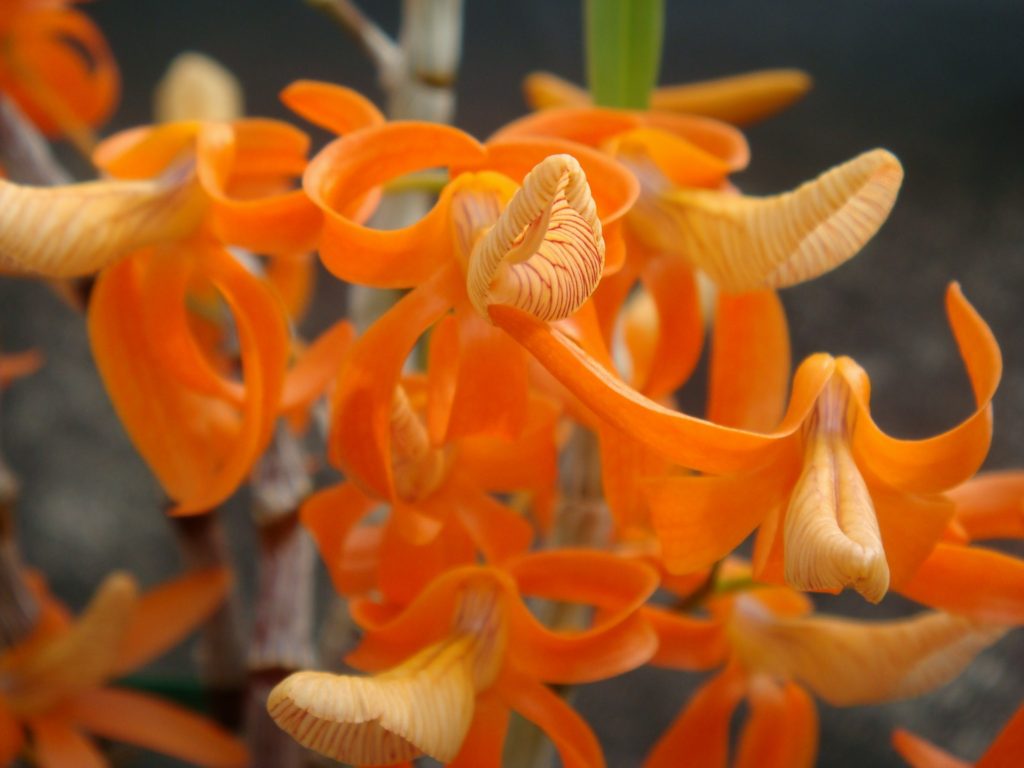
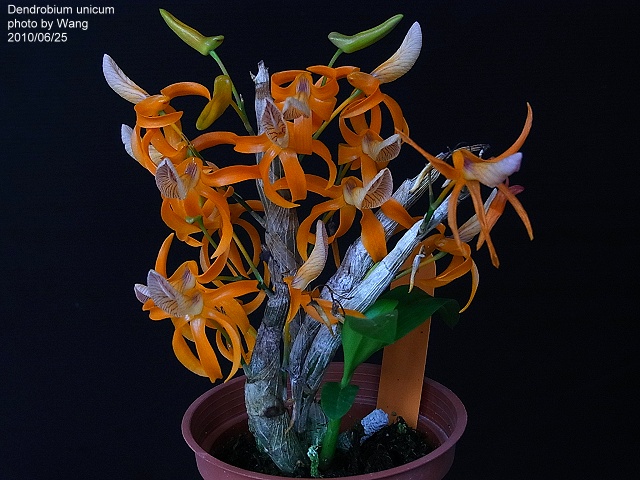
Exif_JPEG_PICTURE 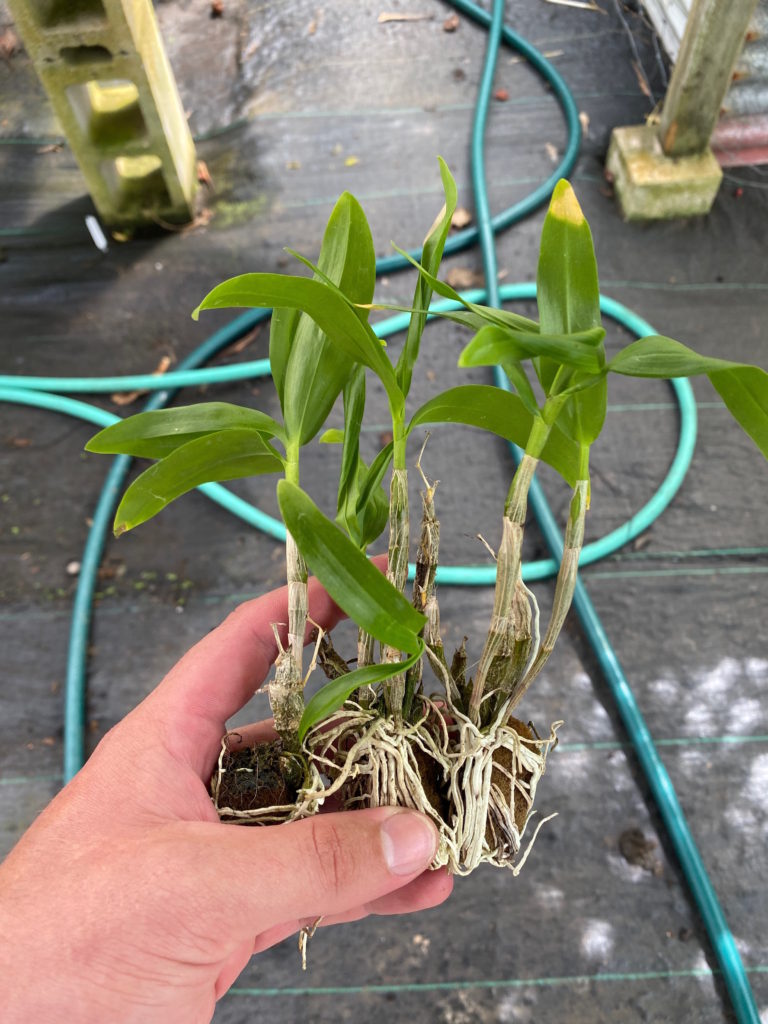
Three representative plants in this photo. Plants are offered singly.
9) Dendrobium kanburiense
This is the awesomest orchid I’ve come across in a long time. I was at a friend’s nursery when I discovered this incredible species from Thailand. You’d think that growing and dealing in all kinds of orchids, great and small, for many years would make me immune from orchid fever, which I see routinely amongst our orchid customers. But before I knew it, I heard myself blurting out: “I’ve gotta have these. How much?” Now, it is very rare to find a GREEN-flowering Dendrobium species that is also MINIATURE (I mean really small, smaller than Den. cuthbertsonii) *AND* FRAGRANT (reminiscent of coconut and ginger). I’d been looking for a green flowered Dendrobium for awhile, but to have a miniature AND fragrant Den species was like winning the orchid lottery. Fortunately, I was able to get a few more than I need for my own enjoyment and breeding purposes… These are MINIATURE plants (look at your thumb; the whole clump of mini canes is about that size!) Best grown in a terrarium (or under a clear plastic Big Gulp cup). SOLD OUT (we may be able to get a couple more, so email if you’re still interested)
Price: $29.
10) Cattleya trianae (‘Full Moon’ AM/AOS x sib)
‘Full Moon’ received the AOS Miyamoto award for best Cattleya, and there should be some outstanding progeny in this cross that will exceed their parents, something we all want for our kids, but usually with decidedly mixed results. (Not that I’m speaking from personal experience…) Catt. trianae comes from Colombia, where it’s the national flower because the colors on the lip resemble the yellow, blue, and red of the Colombian flag. Uhh…I don’t quite see that, but sure, ok. Don’t want to offend any Colombians, as folks from South America seem to love their countries, futbol, and their native orchids very much (not always in that order). Fortunately we gringos love their orchids, too, and Catt. trianae is well worth loving. These plants are currently in 2″ square pots, and some will definitely be award quality, so the competitive grower will want to pick up a few.
Price is $32; $29 if you get three or more.
11) Lc. Dinard ‘Blue Heaven’
Many Cattleya blooms are extremely impressive in size and color. Lc. Dinard ‘Blue Heaven’ has both — large flowers with amazing color, an excellent hybrid in a genus full of impressive varieties.
We acquired these in a very neglected state, but as anyone who has grown Cattleya types knows, they can handle a great deal of abuse, but with a bit of TLC (i.e., regular watering and fertilization), they will come back just fine. These plants (we’ve divided them from larger overgrown plants) are in ROUGH shape: tangled, overgrown roots, leaf-less back bulbs, dinged up leaves, but the genetics are top-notch, and once recovered, these plants will produce amazing blooms. These plants are for EXPERIENCED GROWERS ONLY. PLEASE PASS ON THESE IF YOU’RE NOT EXPERIENCED WITH ORCHID RECOVERY. We’d typically offer a solid BS plant in the $70 range, (and we’ll have some ready by spring 2020). Since these need a good deal of TLC, we’re discounting to $25. Shipped BARE ROOT.
Price: $25
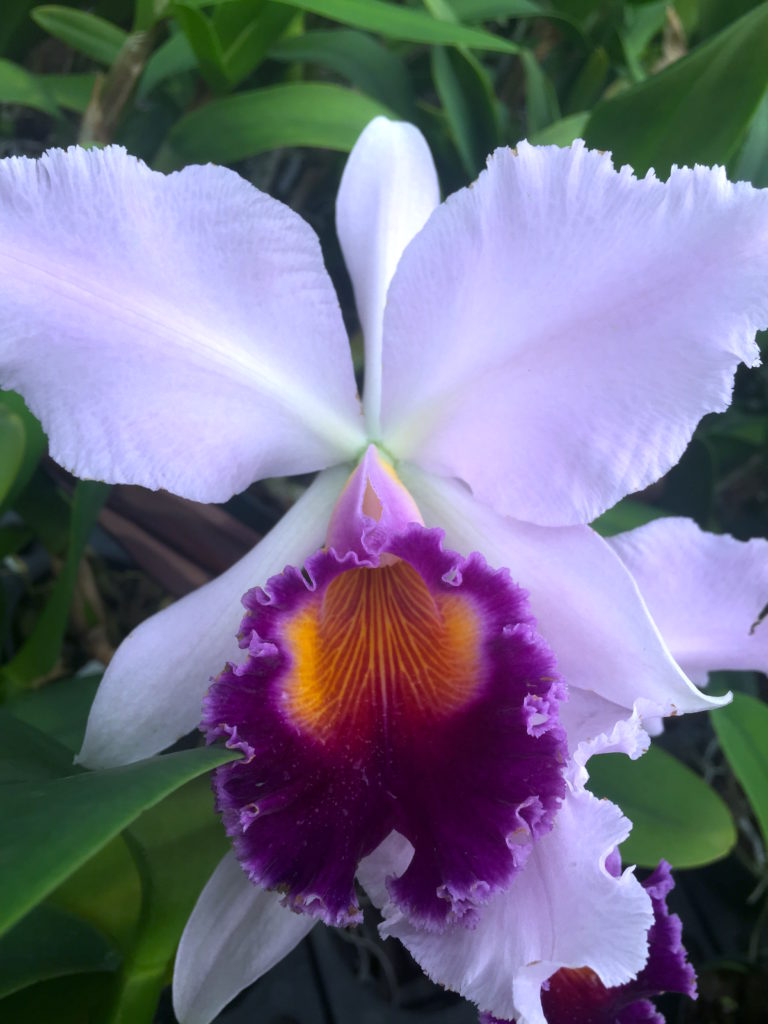
12) Cattleya (Laelia) purpurata var. flammea
This form of Laelia (now Cattleya) purpurata seems somewhat uncommon, as it’s quite difficult to find a good photo (and I haven’t bloomed any out myself yet), but you can see one at this link. Plants are in 2.25″ square pots, about 18 – 24 months from reaching Blooming Size. Easy to grow, and fragrant in bloom.
Price: $19.
13) Cymbidium floribundum (aka pumilum)
One of the great things about the so-called Chinese Cymbidiums, exemplified by Cym. floribundum is their small, almost dainty, size. A full-on Blooming Size plant of this species can just about fit inside a 2-liter soda bottle (see photo) although the leaves would stick out a bit. Now contrast that to “Standard” Cyms which some people grow in 5-gallon paint buckets (or larger), and you can see why space-challenged growers prefer smaller plants. This species is rather difficult to find in cultivation, although many varieties exist in nature.
Prices:
SMALL (2.25″ square pot), $25
NBS (3.25″ square pot), $49
BS (4″ diameter round pot), $85
14) Cymbidium wenshanense
Another small Chinese Cymbidium, from the Yunnan province of China (where a great many orchid species come from, actually). You can see a photo of the flower here. We’re offering these single growth in 2.25″ square pots; they’re still a couple of years from reaching Blooming Size. Cool/intermediate conditions.
Price: SMALL (2.25″ square pot), $25
15) Cym. Ramble on Rose
A nice warm-growing Cymbidium hybrid that we acquired recently, easy to grow and bloom. Narrow-leaved, capable of blooming in a 3.5″ diameter pot. Some have previously bloomed in the past couple of months.
Price: BS, $35.
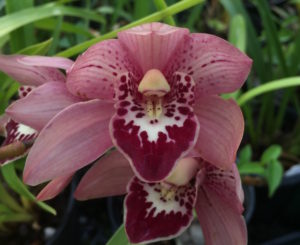
16) Dendrochilum stenophyllum
Orchids of the genus Dendrochilum come mainly from places like Borneo, Papua New Guinea, the Philippines, all the usual suspects for fascinating and somewhat “unconventional” orchids and variations. What these diminutive orchids don’t have in flower size, they make up for in sheer numbers, with each pendulous inflorescence capable of carrying dozens or even hundreds of tiny individual blooms. This particular species, stenophyllum, is not a common one; its name in Latin means “skinny leaf”, a description repeated over and over in the orchid naming, as there seems to be numerous ways of saying this same thing. Very easy to grow and bloom, and would make a cute addition to any collection of small orchids. The LARGE size plants are in 3″ pots and can bloom at the next bloom season. The SMALL size plants are in 2.25″ pots, and can bloom as well, although less prolifically.
Price:
LARGE (in 3″ pots): $20
SMALL (in 2.25″ square pots) $9.
17) Maxillaria Harold Ripley (Max. sanderiana x Max. grandiflora)
This primary hybrid (i.e., a hybrid made from two species) is a surprisingly interesting plant. Most people think Maxillarias resemble the ever popular coconut-fragrance tenuifolia, with its ovoid bulbs and thin leaves. Certainly other Maxillarias I’d seen looked similar until I came across these Harold Ripleys; they reminded me of Miltoniopsis plant-wise, with thin bulbs and wide but thin-leaves. Then I finally bloomed one — big flower about 3.5″ across — and smelled like black licorice (some might say sarsaparilla)! If you’re into fragrant orchids, this one is well worth having. (The other interesting feature are its extremely fine roots, unlike any other orchid I’d seen.)
Price:
MEDIUM/NBS in 3.25″ square pots, $25
LARGE/BS in 4″ square pots, $32.
18) Maxillaria variabilis
The main reason behind Maxillarias’ undeserved lack of popularity in the orchid world is probably due to the lack of flashy hybrids, which is a shame, as the genus is one of the bigger ones at around 700 species. But maybe they make up for it in terms of fragrance; everyone knows tenuifolia smells of coconut and balmy climes, and I’ve mentioned above that Max. Harold Ripley has a sarsaparilla aroma. Now Max. variabilis, apparently a species so named for its variety of forms, is said to produce a cedar wood fragrance, which would at least be a novel, non-generic floral fragrance. What’s also cool is that one of the forms of this species produces yellow blooms, and another produces dark, almost black blooms. I haven’t seen these plants we’re offering in bloom yet, but I’m guessing it’s the yellow one. Black would be just fine, though. Plants are in 2″ pots.
Price: $25
